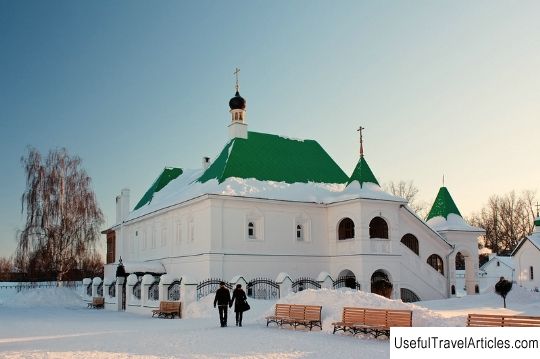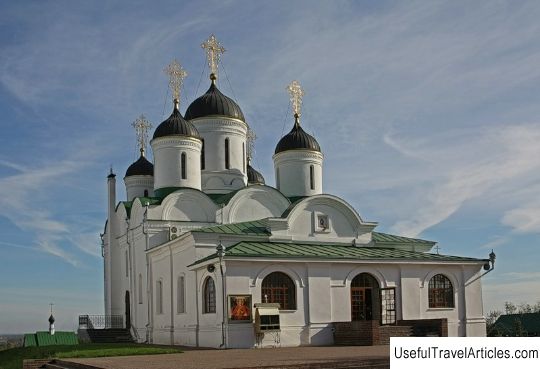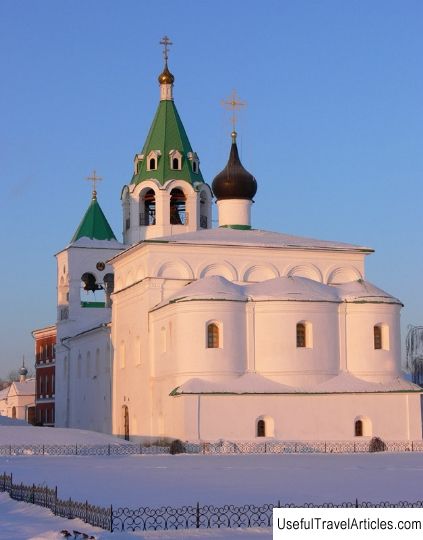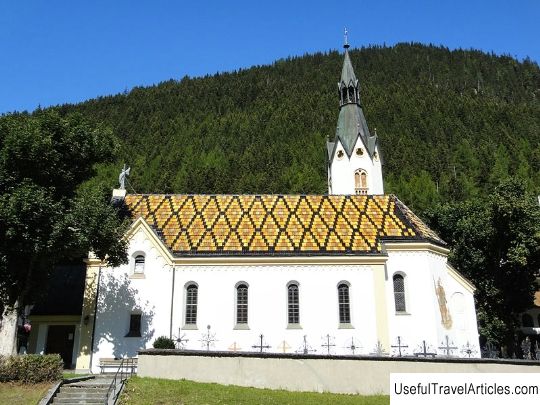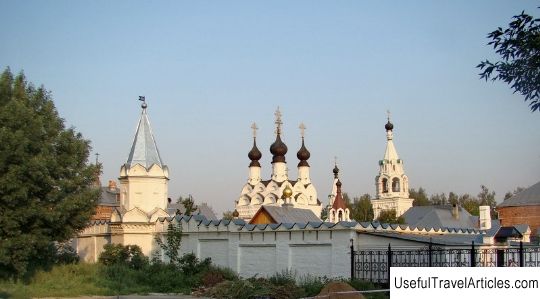Spassky Monastery description and photos - Russia - Golden Ring: Murom
Rating: 8,6/10 (1029 votes) 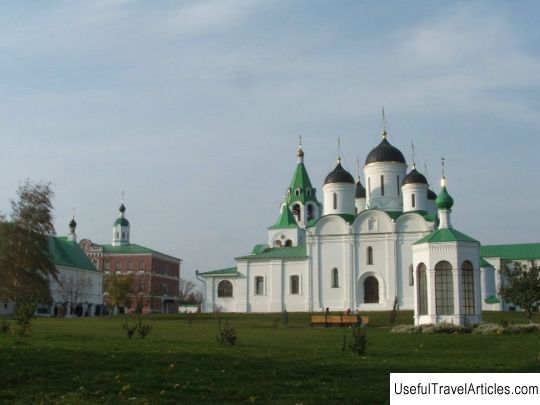
Spassky Monastery description and photos - Russia - Golden Ring: Murom. Detailed information about the attraction. Description, photos and a map showing the nearest significant objects. Photo and descriptionThe Spassky Monastery stands on the banks of the Oka. Spaso-Preobrazhensky Monastery is the oldest male monastery in Russia. The first mention of her can be found in the annals of 1095-1096, when describing the death of Izyaslav, the son of Vladimir Monomakh. The chronicle says that Izyaslav was buried in the Murom Spassky monastery, and from there he was transferred to the St. Sophia Cathedral in Novgorod. According to legend, where the Transfiguration Monastery stands, at the end of the 10th century. was the courtyard of the first Russian prince Gleb, canonized. Naturally, the courtyard could not be without a temple, and there was a wooden Church of the Savior. According to another legend, Murom residents were baptized at this place, called Podokstovo. For a long time, all the monastery buildings were wooden. The cloisters were patronized by the princes of Murom, some of whom were later buried here. During the Tatar-Mongol yoke, the monastery was burned down together with the city. Its revival began in the middle of the 14th century. In 1552 Ivan the Terrible visited Murom during his campaign against Kazan. After the victory, the tsar sent Moscow craftsmen to Murom to build stone churches. Somewhere in 1554, the Cathedral of the Transfiguration of the Savior was built on the high bank of the Oka. The tsar also allowed the monastery to be made a community and granted it lands with villages. The monastery was also patronized by B. Godunov, Mikhail Romanov - from them the monastery received villages, forests, lakes, arable land, and permission for duty-free fishing. Initially, the Transfiguration Cathedral was a vertically oriented slender building with three apses and five domes, its aspiration upward was emphasized by pilasters and shoulder blades. During the construction of the cathedral, the builders made a mistake and in terms of the plan it is not an ideal rectangle, one side is somewhat shorter than the opposite. Over time, the appearance of the cathedral has changed: the pozakomarny covering was replaced with a hipped one, the helmet-shaped domes were replaced with bulbous ones, a wide covered porch and a refectory were added to the west side of the cathedral. In our time, restorers have managed to return the look to the unique architectural monument, close to the original. Next to the cathedral, on the north side, there is the refectory church of the Intercession of the Virgin, which was built in 1691 with funds from allocated by Metropolitan Barsanuphius, a native of Murom. This is a two-story church, unique in architecture. Its first floor was occupied by utility rooms: a cookery, a bakery, pantries, a bakery, etc., on the second there was the church itself. In 1757 a tent-roofed bell tower was added to this church. The funds were donated by the Murom merchant Pavel Petrovich Samarin. In 1758 he was presented with a bell of 120 pounds. In the 17th century. the gate church of Kirill Belozersky was erected. At first it was located in the northern wall of the monastery, but in 1805 it was moved to the western wall, where it now stands. In 1687, the abbot's chambers were erected. This is the oldest civilian stone building in Murom that has survived to this day. A house church in the name of St. Vasily Ryazansky. In addition to the abbot, monks also lived in this building - there were five cells on the upper floor, and storerooms on the lower floor. In addition to the stone ones, the abbot also owned four wooden cells, in which, most likely, the monks lived, since the stone premises were damp. The fraternal building was also made of wood. The stone building for the brethren was built in the 19th century. At different times, 10-30 monks lived in the monastery. In 1725, the first school in Murom was opened at the monastery for the training of clergy children. By the decree of Catherine II on the secularization of the monastic lands in 1764, the Transfiguration Monastery lost many of its possessions. But, nevertheless, in 1764, large-scale work on the restoration of churches, fences and church utensils began on its territory. The monastery was famous for its library, in which there were many ancient manuscript monuments. At the beginning of the 19th century. the monastery was surrounded by a new fence and restored anew. In 1891 the last large monastery building was built - the fraternal building. In 1911 a house church was consecrated in it in honor of the Seven Martyrs of Chersonesos. At the end of the 19th century. a necropolis was formed in the monastery, where representatives of the city nobility were buried. In Soviet times, the necropolis was destroyed. In 1918, the monastery was closed and plundered, and the brethren were accused of complicity with the White Guard rebellion. Part of the property was transferred to the Murom History and Art Museum, in 1926-1927. the monastery was occupied by the Krasny Luch factory, and from the 1930s. up to the 1990s. - a military unit. Only in 1995 the gates of the monastery were again opened for believers. Today the monastery has been revived and almost completely restored. On the Oka side, in the eastern wall in 2005, a new gateway church was built in honor of Sergius of Radonezh, and on the site of the necropolis there was a chapel-ossuary, in which the skulls and bones found during the excavations were neatly placed on shelves. Preserved and the main shrine of the monastery − the icon of the Mother of God "Quick to Hearken", which in 1878 was brought from Athos by the rector Archimandrite Anthony (Ilyenov). Of interest is the figure of St. Elijah Muromets, which was made in 2006 by a Murom carver and icon painter according to scientists, who established the appearance and growth of the great hero of Murom from the preserved relics. In the hand of a wooden figure is a particle of the relics of the saint, which was brought from the Kiev-Pechersk Lavra.        We also recommend reading Museum of the History of Orenburg (Guardhouse) description and photos - Russia - Volga region: Orenburg Topic: Spassky Monastery description and photos - Russia - Golden Ring: Murom. |
